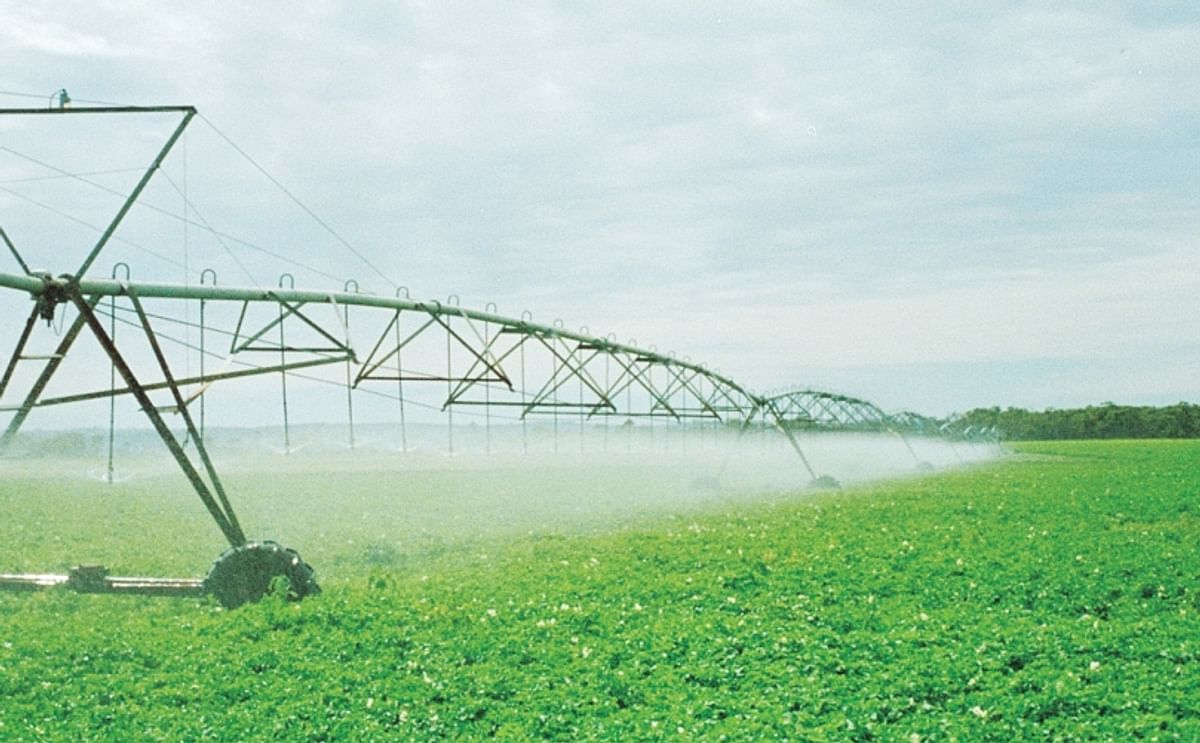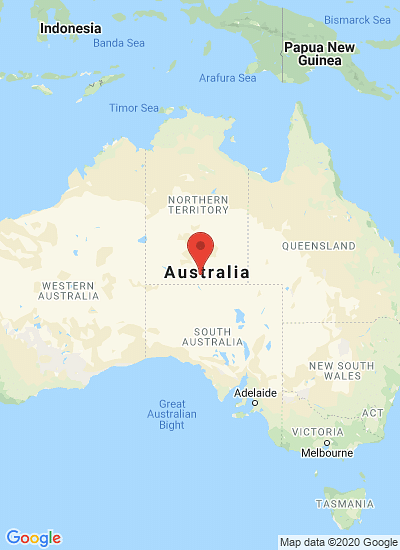With so many areas of Australia relying on bore water, this study on the impact of chemical composition of the soil and the plants depending on water quality could provide the basis for an increased awareness of water and soil management over time.
Research in Australia to help potato growers and industry

The impact of drought and water quality on Australian potatoes could be significantly reduced by a new research project from Potatoes South Australia and Landmark Australia.
While still in it’s initial phases of testing, researchers from the organisations say their results indicate production quality and costs could be improved for the entire potato industry – with potential to extend to other produce in the future.
Potatoes South Australia CEO Robbie Davis says the study – led by her and Landmark Australia research agronomist Shane Phillips – is focused on addressing issues of water management, drought and energy costs.
Robbie Davis, CEO Potatoes South Australia:
Shane Phillips, Landmark Australia research agronomist:
Shane Phillips:
In addition to this research, she says Potatoes South Australia is committed to addressing a number of other issues in the industry.
Robbie Davis:
While still in it’s initial phases of testing, researchers from the organisations say their results indicate production quality and costs could be improved for the entire potato industry – with potential to extend to other produce in the future.
Potatoes South Australia CEO Robbie Davis says the study – led by her and Landmark Australia research agronomist Shane Phillips – is focused on addressing issues of water management, drought and energy costs.
Robbie Davis, CEO Potatoes South Australia:
“We want to look at how to change the industry from a water perspective, a drought tolerant perspective and an energy perspective, because these factors all add up in various ways.”Mr Phillips explains that their current focus is on the impact water quality – and particularly its chemistry – has on potato plants over time.
“Water in particular is a focus [of this research] because we haven’t looked at water quality in this way before.”
Shane Phillips, Landmark Australia research agronomist:
“Variable water sources impact not only on crops but on the chemical composition of the soil and the plants.”With so many areas of Australia relying on bore water, he says this study could provide the basis for an increased awareness of water and soil management over time and variable seasons.
“So we’re looking at how the chemical changes vary over time, the accumulation of certain chemical composites over time and how they interact with applied fertilisers and influence soil nutrient availability.”
Shane Phillips:
“Potatoes are over 90% water, so water is effectively the most important ingredient.”The project has seen them focus on key growing areas in the lower southeast of South Australia, including Mount Gambier and Penola, where they have collected data and also worked with primary producers to test out various water quality control strategies.
“So this is about raising the profile of water. It’s not just enough to turn on a tap or pour it on, it’s about asking “what’s the make-up and composition of this water to maximise production and returns, as well as sustainability.”
“What we’ve been doing so far is mainly survey work to get ideas of variants and we’ve got really interesting data on variability. We’ve also been able to test run some practises and the initial results are really positive – the people doing it with us have been surprised at the results.”He also suggests regular chemical testing of bore water would have a hugely positive impact for potato producers across Australia.
One of the most interesting things they have found is to do with calcium and bicarbonate ion accumulation and its relationship to phosphorus availability. Mr Phillips says understanding these factors will “empower people to make good decisions on how to manage produce and what to do in terms of an holistic approach to adding chemicals.”
“It gives you a better understanding of what needs to be addressed at a management level from season to season.”
“By having a plan that factors in variability of climate, you can manage through different seasons and regions. So there might be things you do in a dry year and then things you do differently in a wet year, which means you can get really good economic management too.”
“I think our early results really show the importance of regular assessments of water chemistry over each season. That’s why I like the approach in Western Australia, where people have to test every year. It’s about learning what’s happening over time and then developing a strategy to manage variants.”Ms Davis adds that this kind of research is a first for the Australian potato industry and could help develop practises that offer more sustainability for producers both environmentally and economically. It will also tie in with another industry-led research project, “Innovative Nutrient Management in the Australian Potato Industry”, currently funded by the Federal Department of Agriculture and being delivered for Potatoes South Australia by PIRSA’s Rural Solutions SA.
In addition to this research, she says Potatoes South Australia is committed to addressing a number of other issues in the industry.
Robbie Davis:
“There’s currently no marketing at a national level in the potato sector and a lack of value-adding in the supply chain, which also has an impact on producers There’s also a serious lack of export development. Exports currently make up 2% of national sales and there’s huge potential for the industry to innovate in this space.”She would also like to see another phase of an internationally supported national program for research and development.
“Without a doubt where Potatoes South Australia has its biggest focus is on increasing consumer demand. Until we complete our research phase, we will not know the barriers to purchase; is it due to a lack of information about nutritional benefits, is it about misconceptions about carbohydrates, is it about versatility or is it something else altogether?”
“As the 3rd largest commodity globally, I think it’s a fantastic industry but it needs targeted industry-led investment.”But the industry is currently dealing with a number of challenges, including low demand, over supply and climatic variances.
Australia industry currently produces 1.27 million tonnes of potatoes each year, with the latest data (2012-2013) showing that the annual production (farm gate) value is worth $690 million.
“A big issue at the moment is that supply is outstripping demand and prices are low as a result. One of the compounding factors now is El Niño, which has led to drought in many production regions, resulting in more pressure on the industry,” she says, adding that Australian potato quality is already “the best in the world”.
“We are the most expensive producer of potatoes in the world, which makes us largely uncompetitive. However, our point of difference is reliable premium quality which must be maintained irrespective of changing climatic conditions.”
¿Te gustaría recibir noticias como esta por correo electrónico? ¡Únete y suscríbete!
Get the latest potato industry news straight to your WhatsApp. Join the PotatoPro WhatsApp Community!
Empresa Destacada
Contenido Patrocinado
Contenido Patrocinado
Contenido Patrocinado
Contenido Patrocinado







